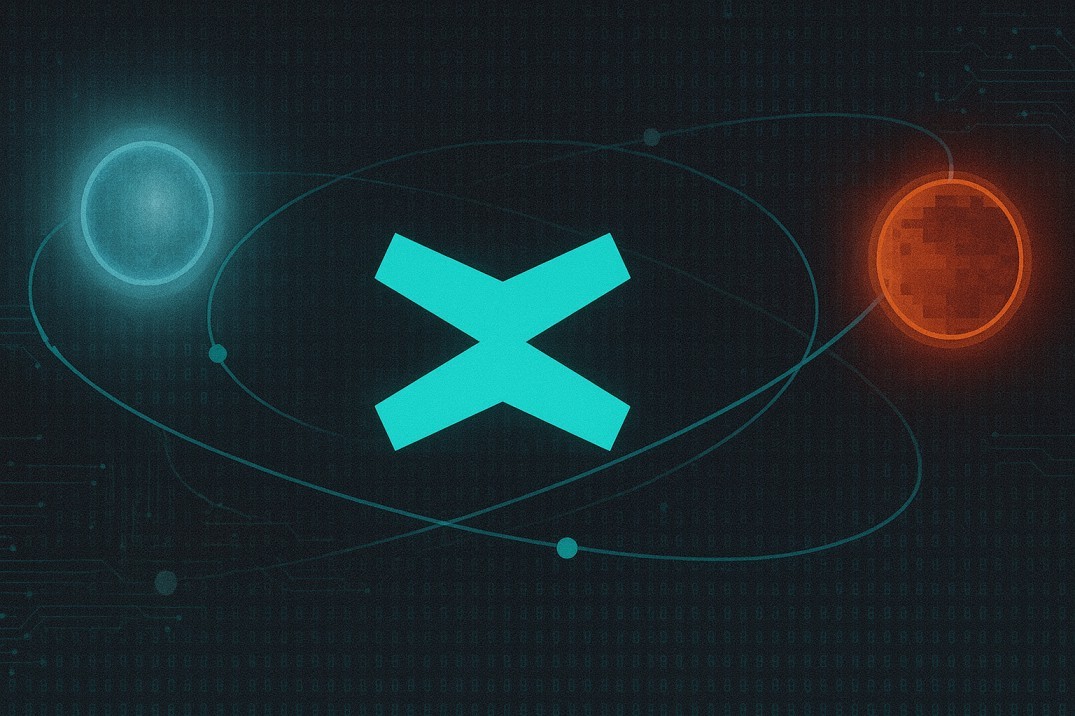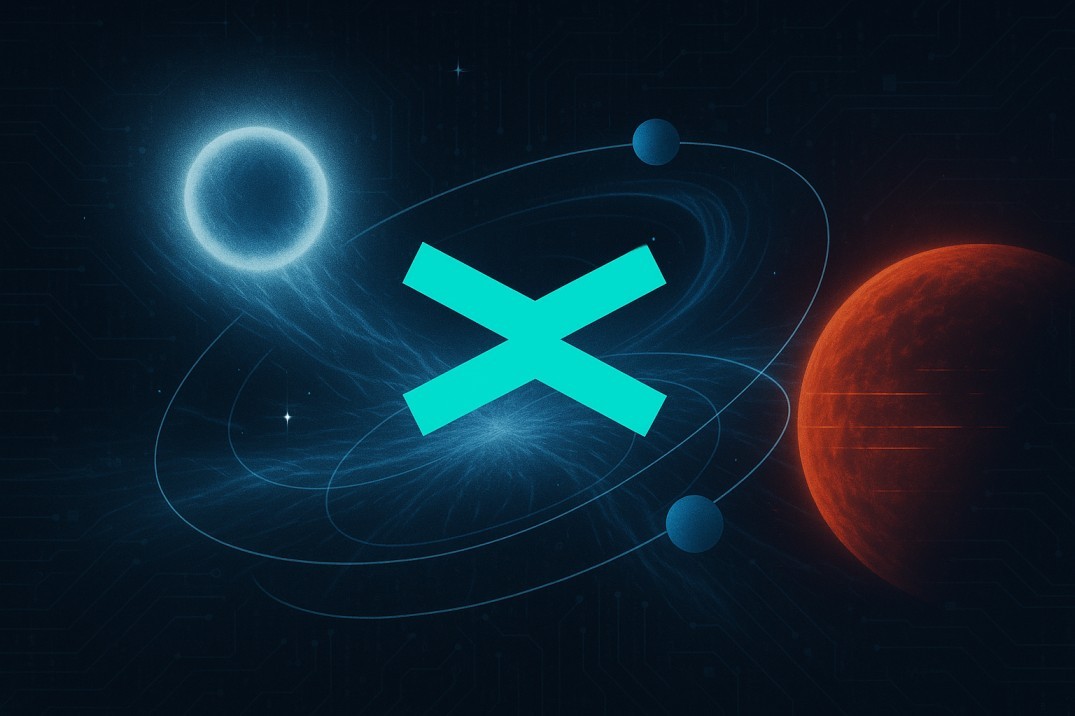TL;DR
- What it is: MultiversX (formerly Elrond) is a high-throughput blockchain focused on scalability, low fees, and real-world usability. It powers applications in DeFi, Web3, and the metaverse.
- Core tech: Uses Adaptive State Sharding and Secure Proof of Stake (SPoS) to achieve fast finality (~6s) and support thousands of transactions per second. EGLD is the native token.
- Ecosystem growth: Hosts DeFi platforms, NFTs, metaverse projects, and enterprise integrations. The Maiar (xPortal) app has expanded user adoption with wallet, payments, and social features.
- Growth drivers: Strong developer tools, low transaction costs, and increasing integrations in finance, payments, and digital identity drive expansion. Community support and global outreach also fuel growth.
- Challenges & risks: Faces competition from Ethereum, Solana, and Layer-2s. Adoption depends on ecosystem activity, developer engagement, and regulatory clarity. Market volatility and execution risks remain.
- Future outlook: MultiversX is positioning itself as a hub for next-gen Web3 and metaverse applications. Success depends on delivering real-world utility, scaling adoption, and maintaining technological leadership.
The blockchain space has witnessed exponential growth since Bitcoin's inception, with thousands of projects attempting to solve scalability, security, and adoption challenges. Among them, MultiversX (formerly known as Elrond) stands out as a blockchain protocol built to power the next generation of the internet economy. MultiversX leverages advanced sharding and proof-of-stake consensus to provide unmatched scalability, low-cost transactions, and a foundation for decentralized finance (DeFi), real-world assets, and the Metaverse.
At the center of this ecosystem lies the EGLD (Electronic Gold) token, which powers transactions, staking, and governance. In this article, we'll explore everything you need to know about MultiversX, from its origins and architecture to tokenomics, challenges, and future potential.
What is MultiversX (EGLD)?

MultiversX is a Layer-1 blockchain protocol designed to achieve true horizontal scalability through the use of all three aspects of sharding: network, transaction, and state sharding. Unlike many blockchains that struggle with throughput, MultiversX's infrastructure can reportedly process up to 100,000 transactions per second (TPS), with a 6-second latency and transaction costs as low as $0.002.
The project envisions itself as a technology ecosystem for the new internet, combining decentralized applications, real-world asset integration, and tools for the metaverse.
Who Are the Founders of MultiversX?
MultiversX was co-founded in 2017 by:
- Beniamin Mincu - CEO, former NEM team member, and early investor in projects such as Zilliqa, Tezos, Brave, and Binance.
- Lucian Mincu - CTO, experienced IT engineer and security specialist.
- Lucian Todea - Serial entrepreneur, founder of Soft32, angel investor in TypingDNA and SmartBill.
The Mincu brothers had previously co-founded MetaChain Capital, an investment fund, and ICO Market Data, an aggregator of initial coin offerings. Their collective expertise spans blockchain development, cybersecurity, and entrepreneurship, making them well-positioned to tackle blockchain scalability.
What Makes MultiversX Unique?
MultiversX differentiates itself through its adaptive state sharding technology, which shards state, transactions, and network layers simultaneously. This innovation allows the network to dynamically scale based on demand.
Key features include:
Adaptive State Sharding: Splits the blockchain into shards for parallel processing, achieving high throughput without compromising decentralization.
Metachain: A special coordination shard that ensures cross-shard communication and finality.
Developer Incentives: Developers earn 30% of smart contract fees as royalties, encouraging ecosystem growth.
Tested Performance: Demonstrated 263,000 TPS in a public environment with 1,500 nodes across 29 countries.
How Does MultiversX Work?
At its core, MultiversX uses three types of sharding:
1. Network Sharding - Splits nodes into groups for parallel processing.
2. Transaction Sharding - Routes transactions to relevant shards.
3. State Sharding - Divides blockchain history and balances across shards.
The network consists of execution shards (processing transactions) and a Metachain shard (coordination and finality). This design ensures scalability while maintaining security and decentralization.
The consensus mechanism is Secure Proof-of-Stake (SPoS):
- Validators stake EGLD to participate.
- Validators are randomly selected for fairness and shuffled to prevent collusion.
- Poorly performing or malicious validators are penalized via slashing.
The protocol employs Boneh-Lynn-Shacham (BLS) multi-signatures for cryptographic security, ensuring transactions are tamper-proof.
Tokenomics of EGLD
The EGLD token serves multiple purposes in the ecosystem:
Transaction Fees: All network fees are paid in EGLD.
Staking: Validators and delegators stake EGLD to secure the network and earn rewards.
Governance: Holders vote on key network upgrades and proposals.
Incentives: Developers and users receive EGLD for contributing to ecosystem growth.
Supply:
Initial supply: 20 million EGLD (after redenomination from ERD).
Inflation: Controlled via staking rewards, gradually reducing over time.
Utility: Store of value, medium of exchange, and governance asset.
Ecosystem and Use Cases
MultiversX envisions itself as a digital economy platform that supports:
- DeFi protocols: Lending, borrowing, decentralized exchanges.
- Real-world assets: Tokenization of assets like real estate and commodities.
- Metaverse applications: Digital identity, NFTs, and immersive experiences.
- Enterprise adoption: Scalable infrastructure for business applications.
The blockchain also launched products like xPortal (a super-app for payments and crypto), xWorlds (metaverse infrastructure), and xFabric (enterprise blockchain modules) to expand usability.
How Is MultiversX Secured?

Security is ensured via the Secure Proof-of-Stake (SPoS) consensus mechanism:
- Validators are randomly selected and reshuffled for unpredictability.
- Validator performance is monitored via a rating system; poor performers face slashing or removal.
- BLS cryptographic signatures provide strong protection.
This hybrid of randomness, penalties, and cryptographic safeguards ensures decentralization and resilience against attacks.
Key Achievements and Milestones
- 2019 - Testnet reached 263,000 TPS with 1,500 nodes across 29 countries.
- 2020 - Mainnet launch of Elrond (later rebranded as MultiversX in 2022).
- 2021 - Maiar wallet (now xPortal) launch, reaching millions of users.
- 2022 - Rebranding to MultiversX, signaling expansion into metaverse and real-world integrations.
- 2023-2024 - Continued ecosystem growth with xFabric, xPortal, and DeFi integrations.
Challenges and Risks
While MultiversX shows strong potential, it faces several challenges:
1. Competition: Faces rivals like Ethereum, Solana, and Avalanche in the smart contract and DeFi space.
2. Adoption: Achieving mainstream adoption requires strong partnerships and developer traction.
3. Regulation: Global regulatory uncertainties may impact staking, DeFi, and tokenization use cases.
4. Complexity of Sharding: Maintaining synchronization across shards while scaling is technologically complex and could introduce risks if not managed well.
5. Market Volatility: As with all cryptocurrencies, EGLD's price is subject to high volatility, which may hinder its role as a store of value.
Future Outlook
MultiversX aims to -it positions itself as a digital nation for the new internet. Its ambitious roadmap includes:
- Expanding DeFi and NFT ecosystems.
- Integrating real-world assets through tokenization.
- Supporting metaverse infrastructure with scalable identity and payments.
- Continuing to improve throughput and security.
With strong leadership, innovative technology, and a growing ecosystem, MultiversX has the potential to play a significant role in the evolution of Web3.
Conclusion
MultiversX (EGLD) represents one of the most ambitious attempts to solve blockchain scalability and usability. By combining adaptive sharding, secure proof-of-stake, and developer incentives, it provides a foundation for decentralized finance, the metaverse, and enterprise adoption.
Its success will depend on achieving adoption, expanding its ecosystem, and continuing to innovate in a competitive market. For those interested in the future of blockchain infrastructure, MultiversX is a project worth watching closely.











